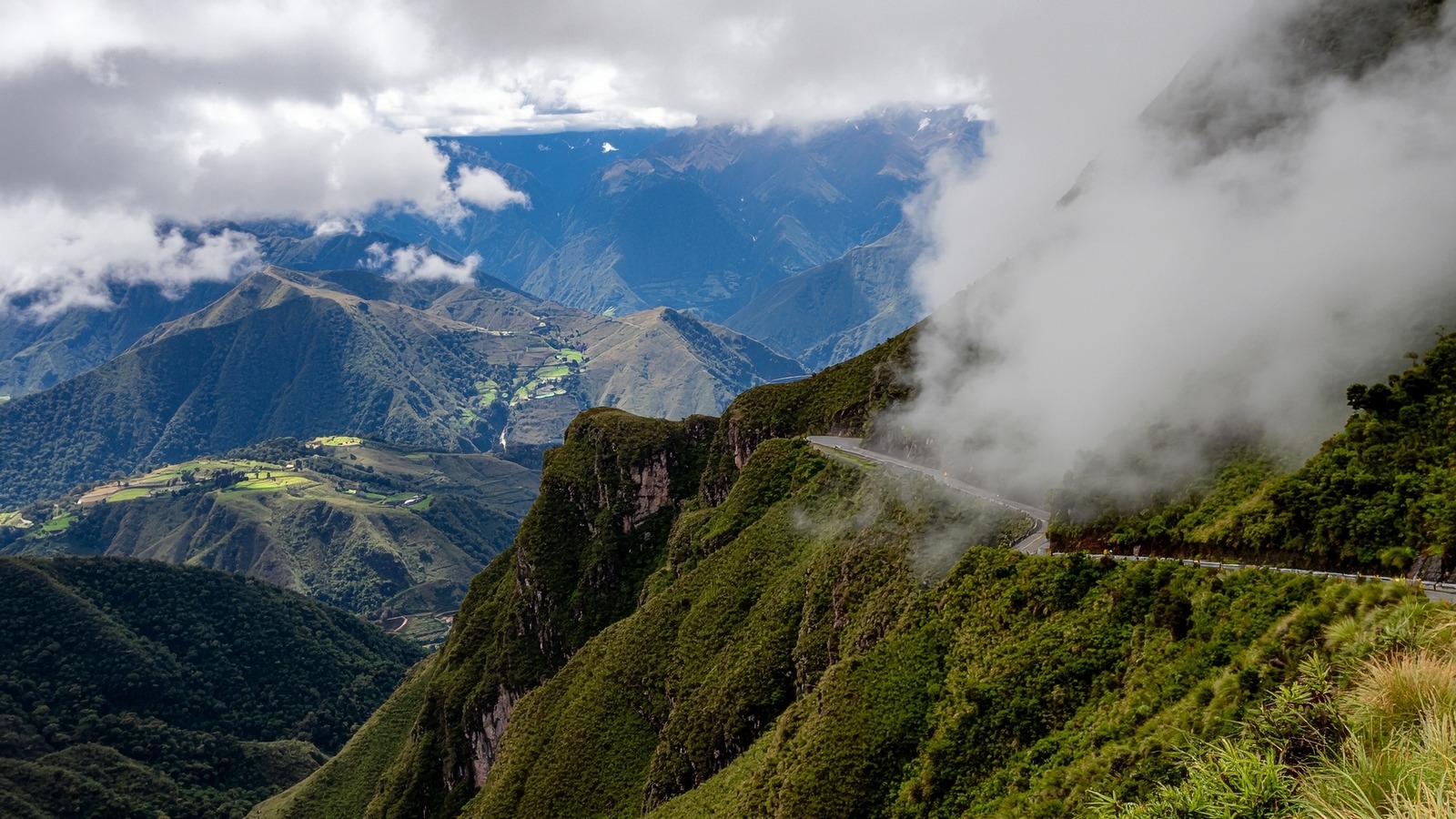
"Located in Bolivia, Colombia, the "Camino de la Muerte," (Death Road), is carved into mountainous terrain. Only 37 miles long, it runs from the city of La Paz to the town of Coroico. It is infamous for its vertical cliffs, some with drop-offs of 2,000 feet, as well as blind curves and hairpin turns. The slopes are also unstable, leading to landslides, and in some places, the unpaved road narrows to less than 10 feet wide."
"That means the road is barely wide enough for one vehicle, let alone two going in opposing directions. Guardrails are few, or completely non-existent according to some reports, and the road is often enveloped in rain and fog, making a perilous journey even more dangerous. It is certainly not a road for timid drivers, but for some thrill seekers, it remains the ultimate ride today."
"Its primary purpose was to connect the Yungas region and La Paz, which is historically the economic and political center of Bolivia and is the nation's administrative capital. Many of the prisoners died while constructing the road, and many more died in later years when trying to navigate it. In 2007, a paved bypass opened, allowing trucks and buses to stay off the Death Road and use the safer route instead."
The Camino de la Muerte is a 37-mile mountain road connecting La Paz and Coroico, characterized by vertical cliffs, 2,000-foot drop-offs, blind curves, and hairpin turns. Unstable slopes cause landslides, and some unpaved sections narrow to under 10 feet, allowing only one vehicle. Guardrails are scarce or absent, and frequent rain and fog increase danger. Paraguayan prisoners of war built the road after the Chaco War in 1935, with many fatalities during construction and subsequent travel. A paved bypass opened in 2007; before that, annual fatalities were estimated at 200–300 people.
Read at SlashGear
Unable to calculate read time
Collection
[
|
...
]